Top 10 Places to Visit in Denizli: From Pamukkale to Ancient Cities
Denizli, the second largest city in the Aegean Region, welcomes thousands of visitors every year with its unique nature, deep-rooted history and rich tourism opportunities. The city's history begins with the founding of Laodicea by Antiochus II in 261-253 BC. According to legend, Antiochus named the city after his wife. Following a major earthquake in the 7th century AD, the city was destroyed and rebuilt in the area now known as ‘Kaleiçi.’ The city came under Turkish rule in 1070 and, despite some interruptions, began to be referred to as ‘Ladik’ during the Seljuk period. Thanks to its rich historical past, Denizli is home to traces of many civilisations. So, where should you start your journey amidst all this historical and cultural richness? Here are 10 amazing stops you must see when visiting Denizli!
1. Hierapolis Archaeological Site
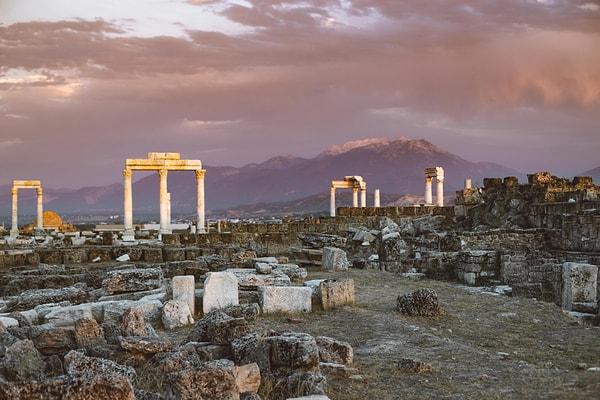
Known as the city of water and faith, the ancient city of Hierapolis was founded in the 2nd century BC by King Eumenes II of Pergamon. Located within the boundaries of Pamukkale today, this ancient city takes its name from the mythological figure Hiera. Due to its location in an active earthquake zone, it has been destroyed many times and undergone major changes, particularly in 60 AD. When you visit the Hierapolis Archaeological Site, you will have the opportunity to see the magnificent 1,800-year-old Hierapolis Ancient Theatre, the Martyrion of Saint Philip, which symbolises eternity, and the Plutonium, one of the most famous sacred structures in Asia Minor.
2. Pamukkale Travertines
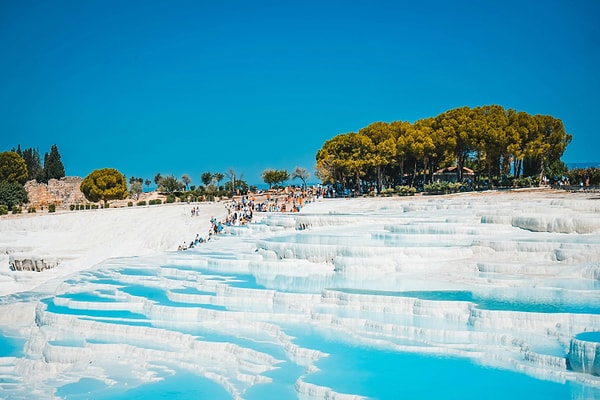
When you think of Denizli, the first thing that comes to mind is the Pamukkale Travertines, a UNESCO World Heritage Site and a true work of art created by nature. These pure white terraces, formed by the precipitation of calcium carbonate from hot springs as they rise to the surface, attract thousands of tourists from all over the world every year. Walking through this natural wonder, shaped by thermal waters over thousands of years, taking photos against the backdrop of the scenery, and feeling the healing effects of the water, offer a unique experience. Pamukkale appeals not only to the eye but also to the soul.
3. Hierapolis Archaeological Museum

The building, located within the ancient city of Hierapolis and once used as a Roman bath, has been restored and transformed into an impressive museum. Many historical pieces brought from various archaeological sites, especially those unearthed during the excavations of Hierapolis, are exhibited here. The museum consists of three main halls and takes visitors on a journey through time. The Sarcophagi and Sculptures Hall features remarkable sarcophagi from Hierapolis and Laodicea, while the Small Artefacts Hall displays many pieces from the Hellenistic, Roman, Byzantine, Seljuk and Ottoman periods in chronological order. In the Theatre Finds Hall, reliefs that adorned the theatre stage and tell mythological stories await you.
Source: Turkish Museums
4. Karahayıt Hot Springs
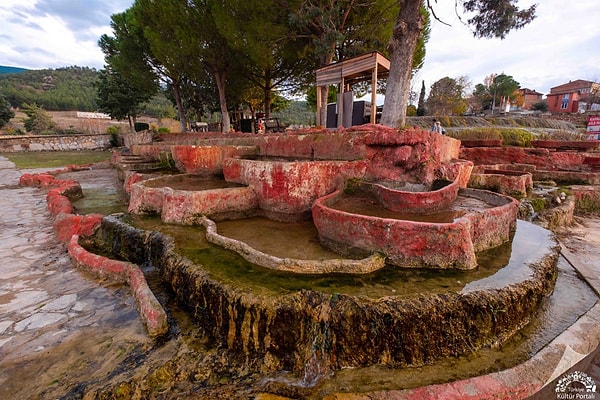
Located very close to Pamukkale, Karahayıt is famous for its healing red water sources. Karahayıt Hot Springs, one of the important stops for thermal tourism, is a natural treatment centre known to be beneficial for both skin health and musculoskeletal disorders thanks to its rich minerals. The modern hotels and facilities in the region also constitute an important attraction for health tourism. With its red-tinged travertines, Karahayıt, which can be considered the sister of Pamukkale, offers visitors a unique thermal experience.
Source: Türkiye Kültür Portalı
5. Tripolis Archaeological Site
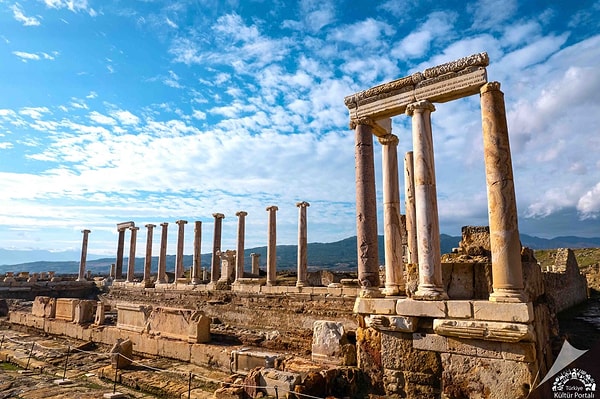
According to historical sources, the first name of this ancient city was Apollonia, and its history dates back to the Lydian Civilisation. However, the ruins visible on the surface today bear architectural features from the Roman and Byzantine periods. At the Tripolis Archaeological Site, you can explore a Roman-style ancient theatre, an impressive Roman bathhouse, the city hall, the castle and walls, waterways, and the ancient necropolis. This area is one of the rare places where you can still feel the grandeur of the past today.
Source: Türkiye Kültür Portalı
6. Kaklık Cave
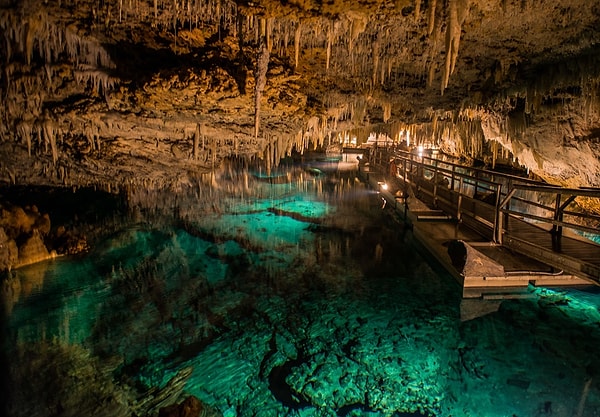
Known among the locals as the ‘Pamukkale of the Underground,’ Kaklık Cave is located within the borders of Honaz district and is one of the natural wonders that prove that travertine formations can also be seen in cave environments. The thermal water pools, white travertine formations, and stalactite-stalagmite structures inside the cave offer visitors a visual feast. The humid and slightly sulphurous air inside the cave is believed to be beneficial for respiratory ailments. Thanks to its lighting, Kaklık Cave offers enchanting views and is a must-visit destination for nature lovers.
Source: İmplavizyon
7. Denizli Ataturk Ethnography Museum
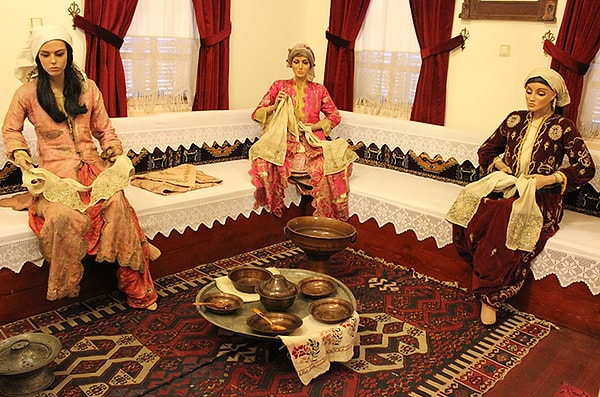
This house, where Mustafa Kemal Atatürk stayed during his visit to Denizli on 4 February 1931, now serves as both a memorial house and an ethnography museum. After being used as a tuberculosis dispensary in the 1950s, the building was restored in commemoration of the 100th anniversary of Atatürk's birth and converted into a museum in 1984. The museum's lower floor displays ethnographic artefacts, while the upper floor houses objects belonging to Atatürk. The other rooms of the mansion are also arranged to reflect traditional lifestyles. During your visit, you can get to know Denizli culture more closely and follow in the footsteps of Atatürk.
Source: Müze.gov.tr
8. Mount Honaz National Park
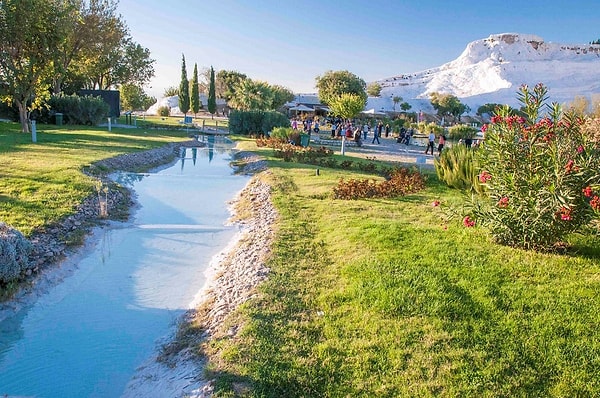
Mount Honaz National Park is an ideal destination for those who want to explore the natural beauty of Denizli. Mount Honaz (2,571 m), which is also the highest peak in the Aegean Region, attracts nature lovers with its rich vegetation, wildlife and magnificent views. This area is well suited for activities such as trekking, nature walks and camping. As you walk among the cedar, juniper and black pine trees, you can completely escape the noise of the city. In winter, the snow-covered peaks offer unique photo opportunities for photographers.
Source: Tripadvisor
9. Laodicea Archaeological Site
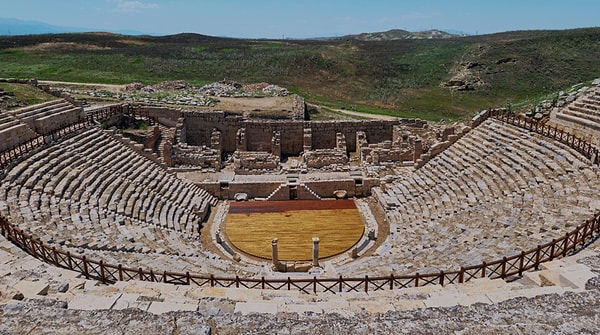
Founded by Antiochus II between 261 and 253 BC and named after his wife, Laodicea is an important ancient city that has been continuously inhabited from the Early Chalcolithic Period to the 7th century AD. Excavations have revealed the city's importance as a settlement centre throughout history. Among the ruins that have survived to the present day are Anatolia's largest stadium, two theatres, four bath complexes, five agoras, five fountain structures (Nymphaeum), two main entrance gates, a council building, temples, churches and the monumental Syrian Street. In addition, the city is surrounded by necropolis areas on all sides.
Source: Turkish Museums
10. Babadağ Textile and Handicrafts Market
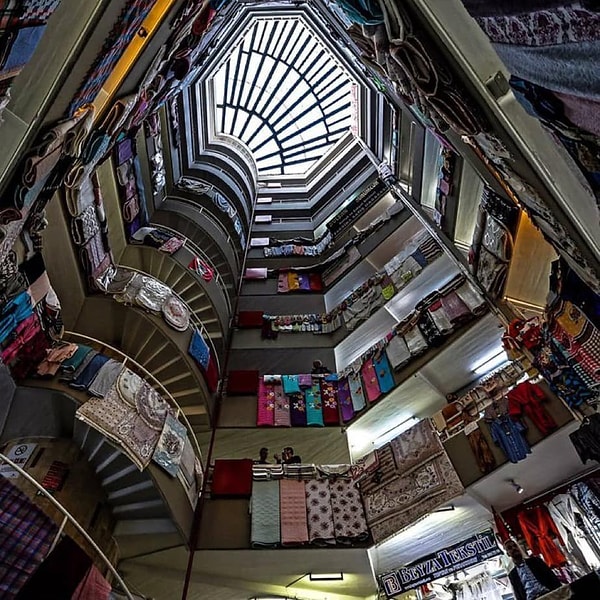
Denizli is known not only for its history and nature, but also for its strength in the textile industry. Babadağ district is famous for its high-quality towels, bathrobes and fabrics produced on traditional hand-woven looms. Babadağ Textile and Handicrafts Market is a centre where this time-honoured craft is kept alive and unique products are displayed. You can shop at stores selling handcrafted products, see the looms in action, and get a closer feel for the cultural fabric of the region. Shopping here is not just about buying a product; it is about embracing a tradition.
Source: Denizli Metropol
Keşfet ile ziyaret ettiğin tüm kategorileri tek akışta gör!

Send Comment